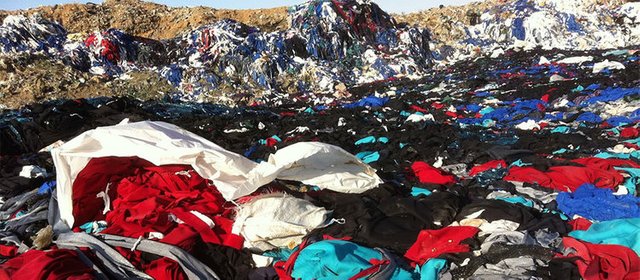Textile waste pollution, Land Degradation and Climate Change | Part 1, The Problem

The textile production industry is one of the most polluting industries, producing 1.2 billion tonnes of CO2 equivalent per year and these emissions are more than the emissions of international flights and maritime shipping. Worststill,the largest proportions of clothing manufacturing occurs in China and India, countries which rely on coal-fuelled power plants, increasing the footprint of each garment and perhaps this explains why 5% of total global emissions come from the fashion industry. The exact long-term environmental costs of clothing, footwear, linens and other textiles going into landfills are clear.
Decomposing clothing releases methane, a harmful greenhouse gas and a significant contributor to global warming. The dyes and chemicals in fabric and other components of leach into the soil and contaminate water sources. What about the amount of space these textile waste take in the landfill?
Eleven million tons of textiles clogs up approximately 126 million cubic yards of landfill space – and that’s just one year’s worth of discards.
This means, as we continue with textile production, we are continuing to fuel Climate Change and Land Degradation.
But what can we do to remedy the situation?

EcoDesigns is a textile recycling and fashion designing hub of The Greens (@thegreens) that trains young girls for FREE in Textile Recycling and Fashion Designing in a bid to reduce female unemployment, inequalities and poverty, promote female entrepreneurship, improve the health and wellbeing of orphans, prisoners and poor people via the donation of free clothes, as well as combat textile waste pollution and climate change
@ecoDesigns post rewards are used for the payment of rents for the hub, purchase of new machines, maintenance of the old machines and for the overall functioning of the hub
